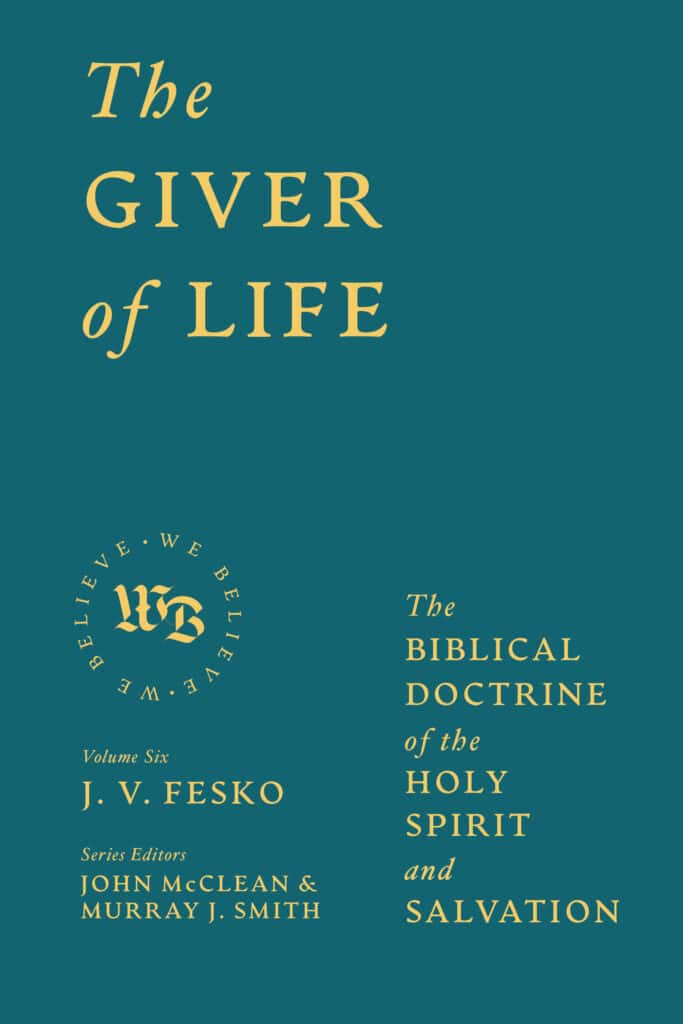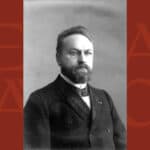
J. V. Fesko is the author of The Giver of Life: The Biblical Doctrine of the Holy Spirit and Salvation. In his new book, he reflects on the person and work of the Holy Spirit in the application of Christ’s work for the salvation of sinners, provides a thorough and trustworthy guide to the Holy Spirit’s role in salvation.
In our interview below, Fesko reflects on the process of writing the book.
J. V. Fesko is Harriet Barbour Professor of Systematic and Historical Theology at Reformed Theological Seminary in Jackson, Mississippi.
Lexham Press: What is the story behind your book and what is your book’s basic thesis?
J.V. Fesko: In celebration of the 1700th anniversary of the Council of Nicaea (325), the We Believe Series, edited by John McClean and Murray Smith, investigates key statements from this creed. In particular, my book examines the phrase, “I believe in the Holy Spirit, the Lord, the giver of life, who proceeds from the Father and the Son, who with the Father and the Son is adored and glorified.” My book explains both the person and work of the Holy Spirit, especially as it pertains to the doctrine of salvation.
LP: Can you tell us what contribution you hope to make with your book?
Fesko: I hope that my book serves as a clear and concise statement of the person and work of the Holy Spirit informed by Scripture, the theology of the catholic (or universal church), and the confessions of the Reformed tradition.
LP: What was a particularly surprising or enjoyable aspect of writing your book?
Fesko: As I reflected upon our purpose in life, my faith was refreshed in contemplating the goal of the Christian life as summarized in the Westminster Shorter Catechism, q. 1: our chief end in life is to glorify God and enjoy him forever. So much in this life competes for our joy but when we use our triune God’s good creation as he intended, then we can use the creation and by it enjoy God. It’s a reminder that we use the creation to worship the creator, not turn the creation into an idol.
LP: Share something surprising about yourself that only your friends would know?
Fesko: My favorite green vegetable is bacon, and I am a huge Star Wars fan!
In this excerpt from The Giver of Life: The Biblical Doctrine of the Holy Spirit and Salvation, Fesko introduces his volume and examines the interpretational history of soteriology within Reformed theology.
The Nicene Creed historically defended orthodox biblical teaching about the person of Christ, that the Son of God is “begotten from the Father before all ages, God from God, Light from Light, true God from true God, begotten, not made; of the same essence as the Father.” These words have been professed for seventeen hundred years by the whole of Christendom, East and West, Protestant and Roman Catholic. As much as the Nicene Creed stakes out important christological truths, it also makes important claims about the doctrine of salvation, a Trinitarian doctrine of salvation no less. The creed confesses that all things were made through the Son and then says that the incarnation was “for us and for our salvation.” But Christ does not stand on the stage of redemptive history alone. The creed continues, “And we believe in the Holy Spirit, the Lord, the giver of life. He proceeds from the Father and the Son, and with the Father and the Son is worshiped and glorified.” The Nicene Creed therefore sets forth a Trinitarian doctrine of salvation, where the Father sends the Son and the Spirit to create, as “through him” (Christ) “all things were made,” and the Holy Spirit is “the Lord, the giver of life.” The Son and the Spirit are also the ones whom the Father sends to redeem sinners and to create the new heavens and earth, as the Triune God brings about the “resurrection of the dead, and … life in the world to come,” where the Son rules over his never-ending kingdom. The Father, Son, and Spirit redeem sinners, those who constitute “one holy catholic and apostolic church,” and as the recipients of the grace of the Triune God, they take this message into the world so that others may know of the blessings of redemption. The people whom God calls to himself through the gospel are also a holy catholic church, a people set apart as those who have received “one baptism for the forgiveness of sins,” who manifest their salvation through the gifts of the Spirit and who worship and glorify Father, Son, and Holy Spirit.
This volume in the We Believe series unpacks the scriptural teaching of our Trinitarian salvation, though it does so from the perspective of the Reformed faith. Early Reformed theologians maintained that they were Reformed catholics and not sectarians; they agreed with the Nicene Creed. The Thirty-Nine Articles (1571) state: “The Three Creeds, Nicene Creed, Athanasius’s Creed, and that which is commonly called the Apostles’ Creed, ought thoroughly to be received and believed: for they may be proved by most certain warrants of Holy Scripture” (8). Likewise, the Gallican Confession (1559) and Belgic Confession (1561) make similar statements: “We willingly accept the three ecumenical creeds—the Apostles’, Nicene, and Athanasian—as well as what the ancient fathers decided in agreement with them” (BC 9; see also Gallican Confession 5). The Second Helvetic Confession (1566) also approves and commends the councils of Nicaea, Constantinople, Ephesus, and Chalcedon, along with the Athanasian Creed (11). The Reformers believed that the Nicene Creed was biblical, which is why they included affirmatory statements about it in their confessions of faith. The Nicene Creed and Reformed theology, more specifically soteriology, go hand in hand.







